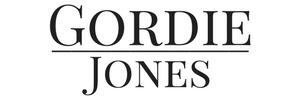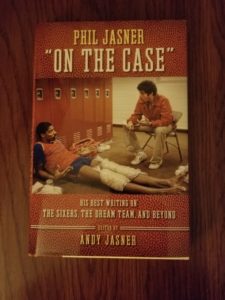Phil Jasner was a sportswriter of another time and place. Yet the things he represented – thoroughness, fairness, decency – are worth remembering, worth preserving.
His son Andy, himself a sportswriter, has done just that in a collection of Phil’s work called “On the Case” (Temple University Press).
The elder Jasner, who died in December 2010 at age 68 of cancer, worked for the Philadelphia Daily News from 1972 to 2010, covering the 76ers for the last three decades of that tenure. The book’s title is a quote he often uttered to frazzled copy editors when they called him, no matter the hour, about a Sixers matter that required his attention: Could he get something together?
Of course. He was on the case.
That was always true, to the point that he became the go-to read for anyone following the team across the eras of such stars as Julius Erving, Charles Barkley, Moses Malone and Allen Iverson.
Beat writers came and went from the rival Inquirer – there were, by my count, 20 in Jasner’s time covering the team – but he remained. (One of the few to lay a glove on him was none other than Stephen A. Smith, who had Iverson’s ear. Other than that Jasner, forever embedded with the front-office types, broke nearly every important story.)
Jasner earned countless friends and admirers for his relentlessness. In this compilation alone, Billy Cunningham, Barkley and Iverson all provide their recollections of Phil, and all of them write at one point or another that he was fair – that while his job required him at times to write something they might not have liked, they always thought he did his best to ferret out the truth, to get both sides of the story, to treat them with an even hand.
And the cover photo shows Jasner seated on a folding chair in the locker at St. Joseph’s University, where the team used to practice, cradling his pen and notepad. Lying on the floor before him is Erving – the legendary Dr. J — with a huge icebag on each knee. Jasner is making a point, and Erving’s hands are spread wide, as if he is parrying. Their eyes are locked on one another.
Clearly this is a spirited give-and-take between two people who respect one another, who readily understand and accept the rules of engagement between reporter and athlete. (And there is not a publicist in sight. Again – different time and place.)
Speaking of the good Doctor, I paged through this volume until I found Phil’s account of Game Four of the 1983 Finals, when the Sixers beat the Lakers to close out the fo’-fi’-fo’ championship run foretold by the usually reticent Malone.
The story, naturally entitled “The Promised Land,” elicited memories not only of the moment, but the guy who recorded it: Every detail, every quote, is just so.
For those who might not remember, Erving made all the key plays down the stretch of the clincher, including a jumper from the top of the circle with 24 seconds left that all but sealed the deal.
“I didn’t find that shot,” Erving told Jasner. “It found me.”
I’m drawn to that quote, because for a very long time glory had eluded Erving and the Sixers. They had fallen in the Finals no fewer than three times in the previous six years, and until Malone arrived in ’82-83 it appeared he might never win an NBA title.
And then he did so, poetically and convincingly.
(There is a lesson in there, too, that can be applied to the current edition of the Sixers – how for all the talent that has been accumulated, there are lessons to be learned and dues to be paid before the team reaches the playoffs, much less the mountaintop.)
Jasner soldiered on for years after that, tirelessly and doggedly. To those of us in the media tribe, he was gracious with his time and insights, always there to needle or advise.
I will forever remember, for instance, sitting in the parking lot of a Sheetz convenience store outside Kutztown one day in 2003, after accepting a job as a columnist at a publication.
My cell rang. Jasner, offering congratulations.
I was stunned. I had literally accepted the position an hour earlier. How could he have known?
“What, you don’t think I have sources?” he asked with a laugh.
Five years later, I was laid off by the same publication. One of the first emails I received was from Phil.
“You didn’t do anything wrong,” he wrote. “They did.”
That was Jasner – warm, compassionate, caring. If it is reflected in this book, it was reflected that much more beyond its pages.
Consider that he cared for his wife Susan as she fought the dread disease lupus for 35 years, until her death in 2005. She required no fewer than 42 surgical procedures through the years, but Phil seldom breathed word of her condition to anyone; he was just on the case, same as always.
Andy once told me that his dad came to view his job as “an emotional outlet,” as something that “helped him keep his sanity.” The result is timeless work, work that is worth remembering, worth preserving.
Thankfully, that has been done here.

